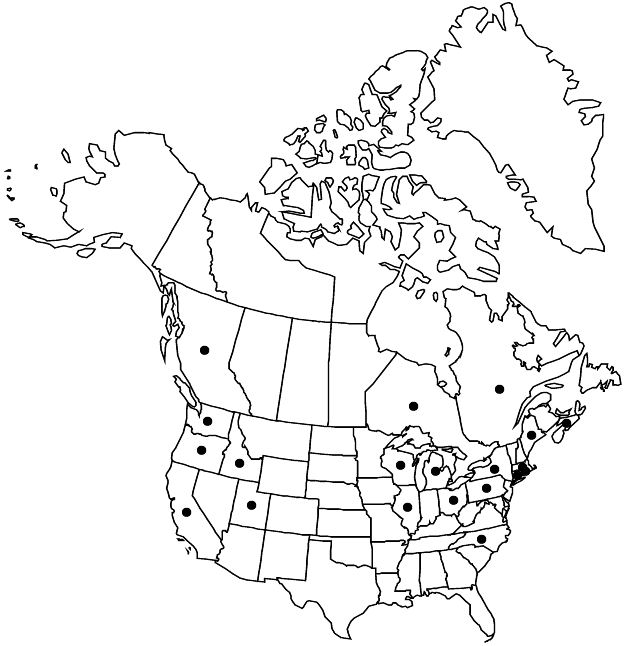Viola odorata
Sp. Pl. 2: 934. 1753.
Plants perennial, acaulescent, stoloniferous, 4–12 cm; stolons green, often rooting at nodes and forming leafy rosettes; rooted rosettes often develop into erect, rhizomatous caudex from which new stolons produced; rhizome thick, fleshy. Leaves basal (and from stolons), 5–10, ascending to erect; stipules lanceolate to linearlanceolate, margins fimbriate, projections gland-tipped, apex acute; petiole 2–17 cm, puberulent; blade unlobed, ovate to orbiculate, 1.5–7 × 1.5–5 cm, base cordate, margins crenate, ciliate, apex obtuse to rounded, surfaces puberulent. Peduncles 4–15 cm, puberulent. Flowers: sepals narrow to broadly lanceolate, margins ciliate, auricles 3–4 mm; petals deep to pale blue-violet, pale blue, or white on both surfaces, usually white basally, lateral 2 sparsely to densely bearded, lowest usually purple-veined, 12–22 mm, spur usually same color as petals, elongated, 5–7 mm; style head beardless; cleistogamous flowers on prostrate or ascending peduncles. Capsules sometimes purple-flecked, ovoid, 5–8 mm, puberulent. Seeds brown, 3–4 mm. 2n = 20.
Phenology: Flowering Jan–May.
Habitat: Lawns, roadsides, clearings, riparian habitats, parks, urban areas
Elevation: 0–1700 m
Distribution

Introduced; B.C., N.S., Ont., Que., Calif., Conn., Idaho, Ill., Maine, Mass., Mich., N.Y., N.C., Ohio, Oreg., Pa., R.I., Utah, Wash., Wis., Eurasia, also in Australia
Discussion
Viola odorata occurs in small colonies; individual plants are interconnected by stolons.
The flowers of Viola odorata are noted for their fragrance; some plants are more fragrant than others. It is native to Eurasia and assumed to be introduced in North America where it is usually found in areas associated with human habitation, including parks, lawns, and roadsides. A substantial industry revolved around the commercial production of violets in England, France, and the United States from prior to 1895 and into the 1900s (R. E. Coombs 2003). Viola odorata is sometimes found in remote locations not easily explained by anthropogenic influence, for example, Clearwater Mountains, Idaho. It is available through the nursery trade and is cultivated as a garden plant and occasionally reported as an escape. Viola odorata is grown in southern France for essential oils used in perfumes, flavorings, and toiletries, and also for the production of the sweet, violet-colored liqueur called parfait amour (V. H. Heywood 1978).
Selected References
None.
Lower Taxa
"thick" is not a number.